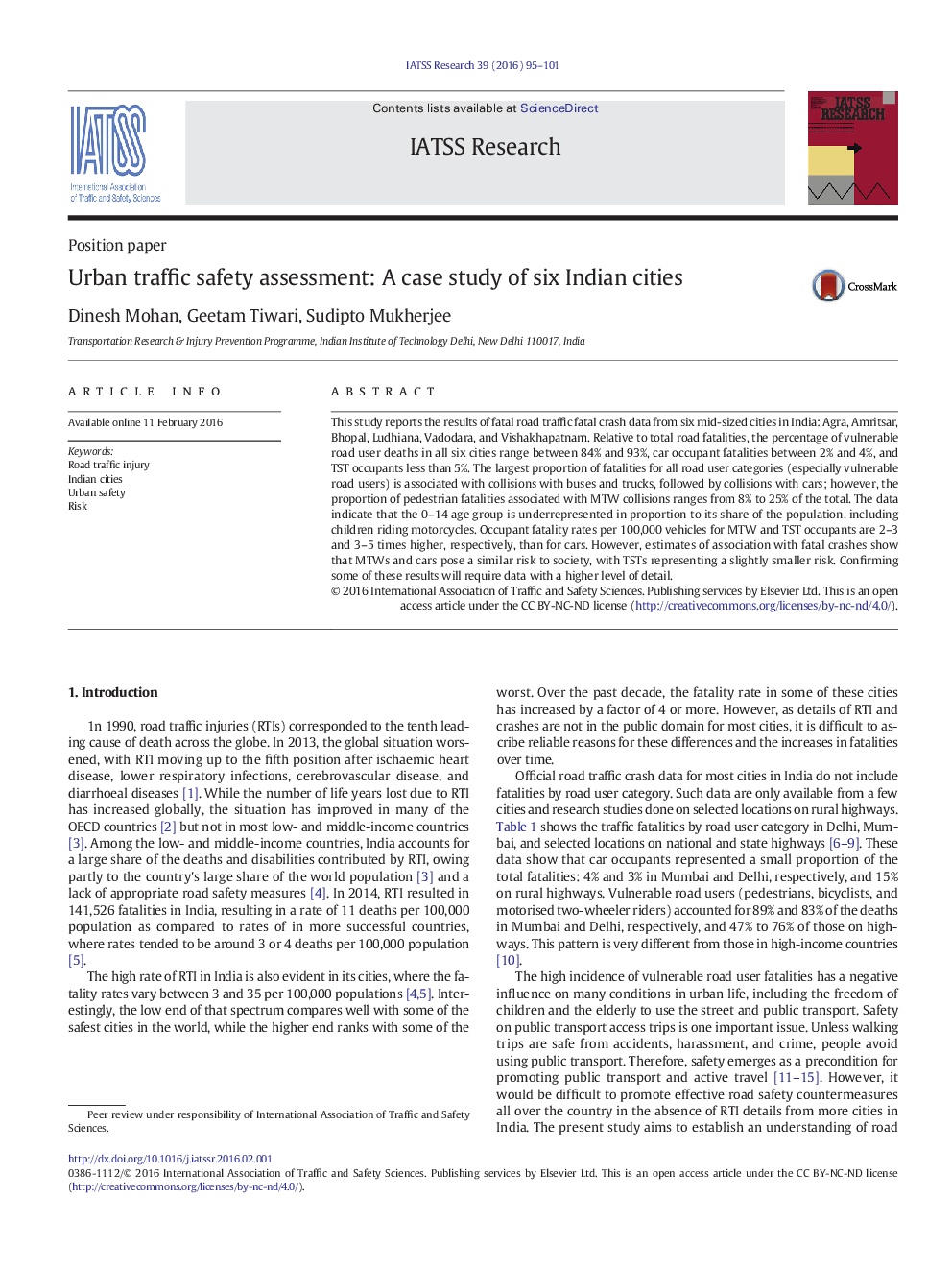| Article ID | Journal | Published Year | Pages | File Type |
|---|---|---|---|---|
| 1104600 | IATSS Research | 2016 | 7 Pages |
•Fatal road traffic crash data from six mid sized cities in India are analysed.•Car occupants comprise only 2%-4% of fatalities in all six cities.•Pedestrians, bicyclists and motorised two-wheeler riders range between 84% and 93% of fatalities.•Most motorcyclists did not use helmets. Fatalities can be reduced by enforcing the existing helmet use law.•Pedestrian fatalities associated with impacts with motorcycles ranged from 8 to 25 per cent of the total.•MTW and pedestrian deaths were relatively high between 20:00-23:00 at night.•Adequate street lighting, checking of drivers under the influence of alcohol and speed control are necessary countermeasures.
This study reports the results of fatal road traffic fatal crash data from six mid-sized cities in India: Agra, Amritsar, Bhopal, Ludhiana, Vadodara, and Vishakhapatnam. Relative to total road fatalities, the percentage of vulnerable road user deaths in all six cities range between 84% and 93%, car occupant fatalities between 2% and 4%, and TST occupants less than 5%. The largest proportion of fatalities for all road user categories (especially vulnerable road users) is associated with collisions with buses and trucks, followed by collisions with cars; however, the proportion of pedestrian fatalities associated with MTW collisions ranges from 8% to 25% of the total. The data indicate that the 0–14 age group is underrepresented in proportion to its share of the population, including children riding motorcycles. Occupant fatality rates per 100,000 vehicles for MTW and TST occupants are 2–3 and 3–5 times higher, respectively, than for cars. However, estimates of association with fatal crashes show that MTWs and cars pose a similar risk to society, with TSTs representing a slightly smaller risk. Confirming some of these results will require data with a higher level of detail.
